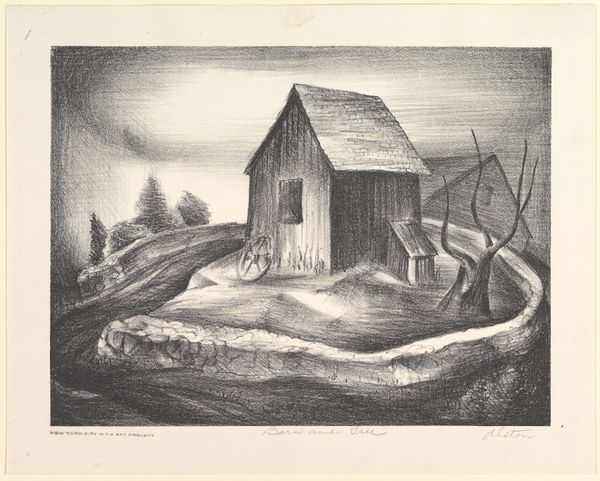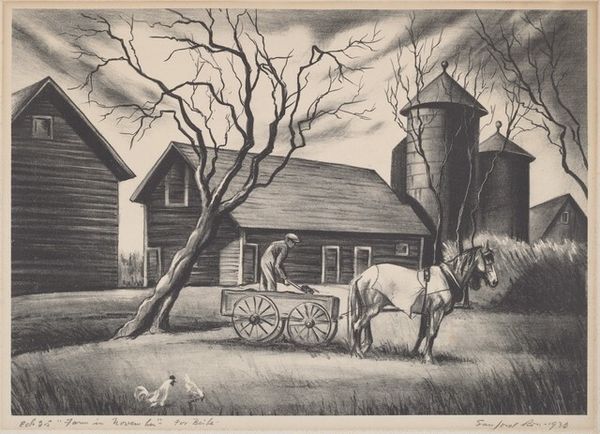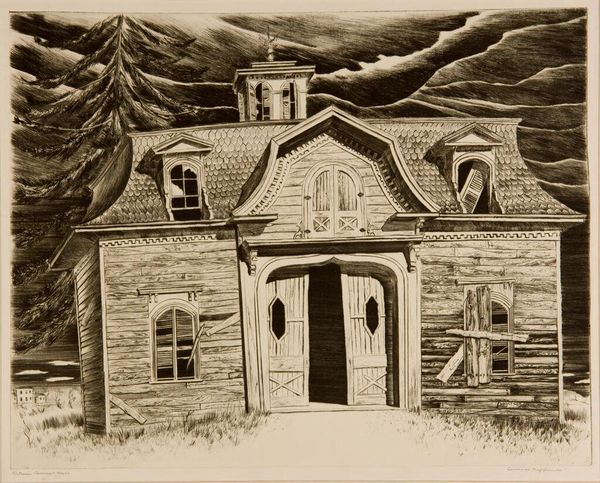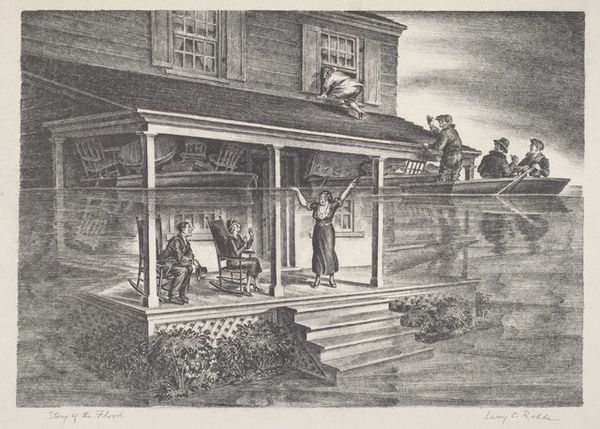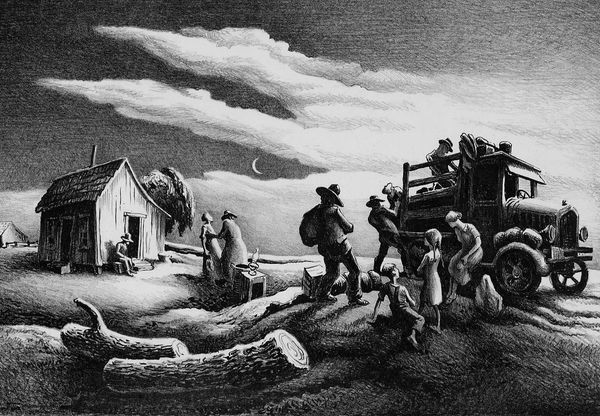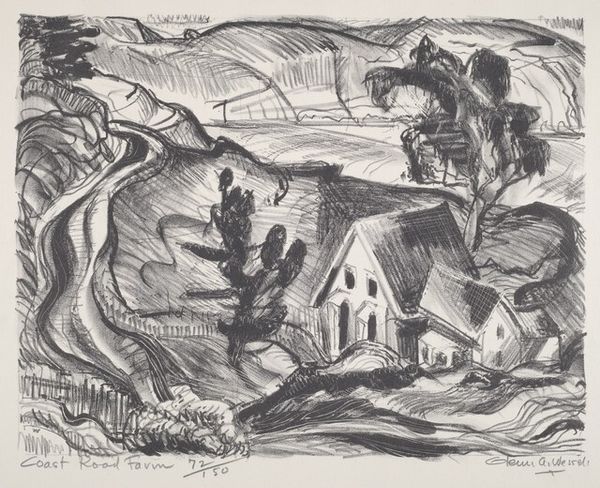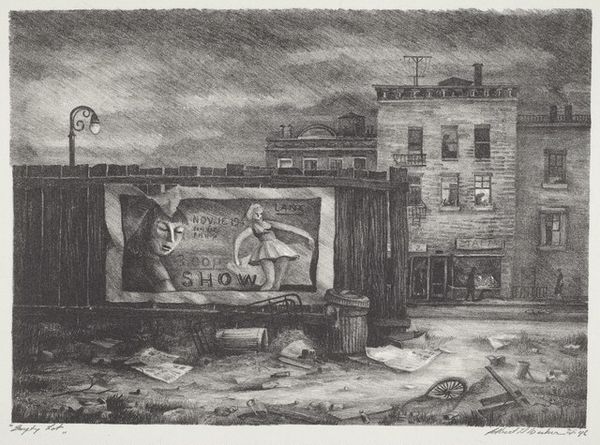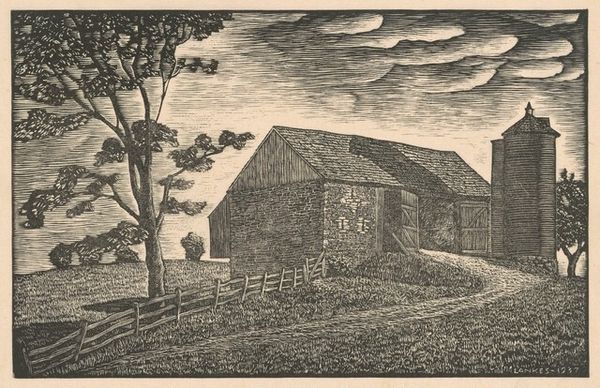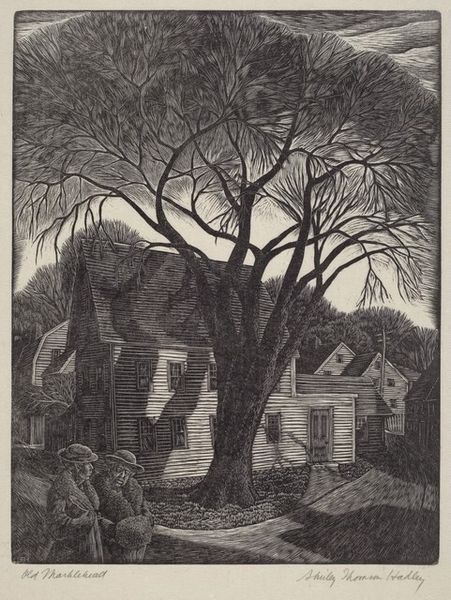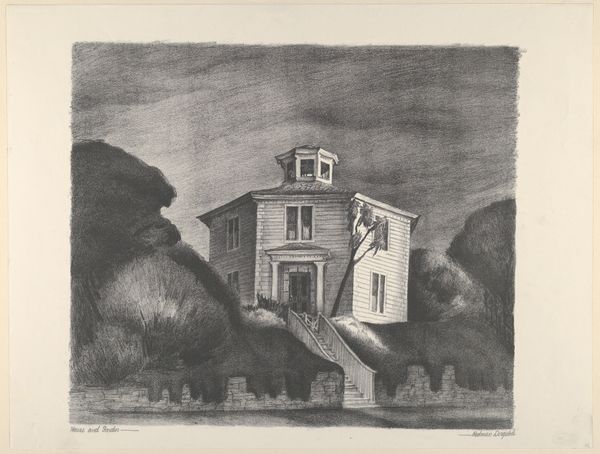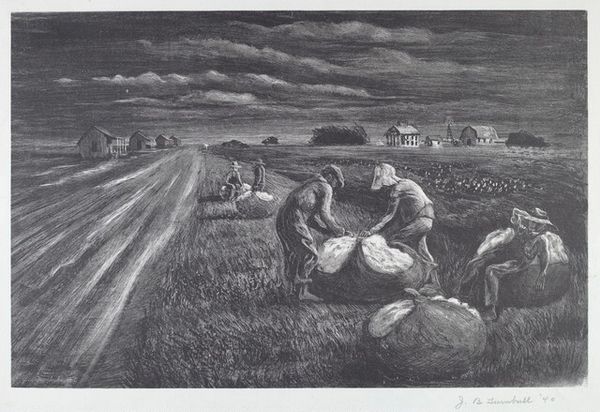
drawing, print, graphite
#
drawing
#
narrative-art
# print
#
charcoal drawing
#
pencil drawing
#
surrealism
#
graphite
#
cityscape
#
surrealism
#
graphite
Copyright: National Gallery of Art: CC0 1.0
Curator: This is Benton Spruance's "Macbeth - Act V", a lithograph created in 1938. Editor: My initial impression is stark. It feels haunted, almost like a scene from a silent horror film. The monochromatic palette intensifies the grim mood. Curator: Absolutely. The greyscale is critical here; lithography lent itself well to the dissemination of such potent imagery, cheap enough to reach a wide audience during the depression. This work is very evocative of the era. What strikes me are the stark contrasts. Spruance forces a material encounter between rough and smooth as the lithographic stone accepts the marks. Editor: It's certainly striking how Spruance merges the urban and the supernatural. You have the quintessential American house right alongside what appear to be spectral figures hauling floral arrangements. It creates an uncanny feeling of displacement and reflects anxiety of pre-war America. How did that tension contribute to his public persona as an artist? Curator: Spruance found a perfect alignment with New Deal ideals which supported artwork reflecting everyday American experiences, filtered through powerful themes. The use of lithography, a medium capable of detailed rendering yet relatively inexpensive, made his work accessible during tough economic times, boosting his prominence in artistic and socio-political circles. This method served to amplify the grim themes by mass distribution. Editor: Yes, thinking about audience and accessibility, I am thinking about how the imagery must have resonated with people facing their own "ghosts," like those uprooted from their homes during the depression, with their lives and memories hanging over them. The car is evocative as well, speaking of industry in transition, reflecting the constant push toward material progress. Curator: It is about the visual metaphor. Mass production, socio-economic change; the ghosts pull garlands along as offerings to material gain. That pull also illustrates how labor and capital have been exploited, producing the very conditions the piece represents. It forces a viewer to see production and distribution critically. Editor: Well, on the other hand, as a viewer, the composition forces me to contemplate how institutions use public memory of traumatic experiences to affect our thinking and public action. The composition of home, spectral workers and industrial symbols are effective, however painful, toward processing national events. Curator: Fair enough; still, Spruance encourages questioning our own agency in the socio-economic machinery of that historical moment. Editor: I can’t argue with that. A chilling image offering both societal critique and space for our own reflection.
Comments
No comments
Be the first to comment and join the conversation on the ultimate creative platform.

